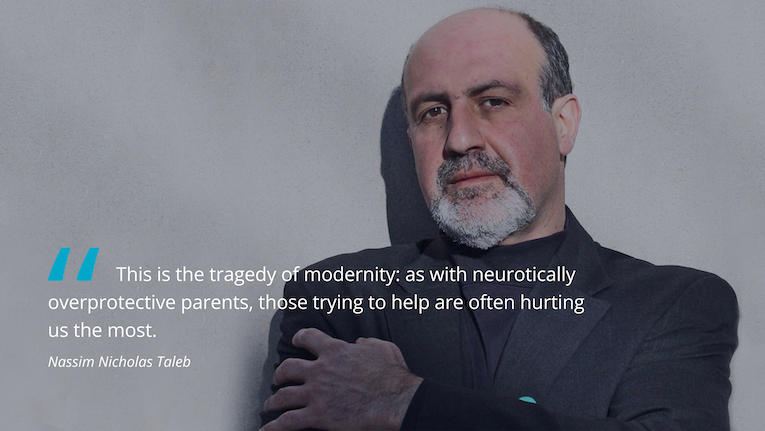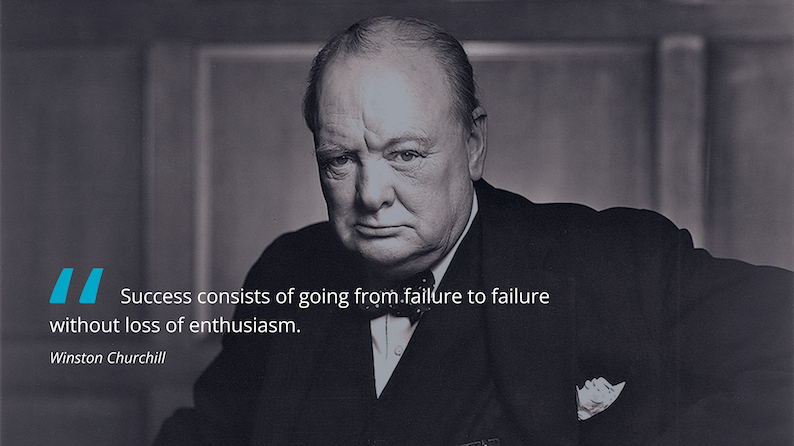Resilience has become a top priority for employers, so much that the 2025 World Economic Forum’s Future of Jobs Report lists it among the most critical skills for the future. In today’s increasingly VUCA world, resilience is essential for building and sustaining strong, high-performing, and mentally healthy teams. But what does resilience really mean? Why is it so important and at the same time, surprisingly uncommon? And most importantly, how can you strengthen it in yourself and your team? Let’s dive in.
The term “resilience” originates from the Latin word resiliens, which refers to the ability of a material to bend or stretch without breaking. From a neurobiological perspective, resilience is defined as an individual’s capacity to withstand extreme stress while avoiding negative social, psychological, and biological outcomes that could otherwise harm their mental or physical well-being. In the field of management and organizational sciences, resilience is viewed as the ability to bounce back from adversity, frustration, and misfortune—an essential trait for effective leadership. Integrating these perspectives, resilience can be understood as the ability to navigate difficulties, recover from setbacks, and emerge from challenges not only intact but stronger and wiser than before.
Are we born resilient?
Resilience isn’t something we either have or don’t, it’s a dynamic trait shaped by both biology and life experience.
On the biological side, certain neurochemicals help regulate stress and speed up emotional recovery. A standout is Neuropeptide Y (NPY), a neurotransmitter shown to buffer stress responses. Studies have found that individuals with higher NPY levels perform better under extreme pressure. Elite military personnel tend to show higher NPY levels than their peers. When tested, those with greater NPY increases under stress reported less distress and fewer trauma-related symptoms. In essence, NPY acts like an internal shield during tough times.
Another biological contributor is a familiar hormone: testosterone. Known for influencing dominance and drive, testosterone spikes in moments of victory, regardless of gender. Athletes with naturally higher levels often rank higher on their teams and report stronger feelings of confidence and connection. This hormone fuels a winning mindset, a key ingredient for bouncing back from setbacks.
But biology is just one piece of the puzzle.
Environmental factors, both internal and external, play a huge role. Internally, traits like optimism and hope stand out. People who believe in their ability to succeed and expect good outcomes are far more likely to grow through adversity. It’s not just wishful thinking, it’s a mindset that protects and stimulates.
Externally, social support is a game-changer. Relationships with caring individuals, whether family or mentors, offer emotional safety and often become turning points during difficult times. People thrive when surrounded by encouragement and trust. These bonds don’t just comfort us, they build us.
So, back to the big question: Are we born resilient? Not exactly. Some may have a head start, but resilience is earned, not inherited. It’s cultivated through life experiences, nurtured by relationships, and strengthened with intentional effort.
Resilience is a practice, something you can lose, but more importantly, something you can grow. It starts with a choice: to show up, stay the course, and keep going. And that choice? It’s always yours.
Why is resilience so rare?
We live in an age of constant reinvention. From morning routines to productivity hacks, people chase the latest trends in lifestyle and mindset. With endless podcasts, self-help books, and wellness apps at our fingertips, you'd think we’d all be better equipped to handle life’s setbacks.
And yet… true resilience feels harder to find than ever.
Why is that?
Some key reasons:
1. Low Self-Esteem in a Comparison Culture
Confidence is a core pillar of resilience, but in the age of social media, it’s increasingly fragile. We're wired to compare ourselves to others, and platforms like Instagram or TikTok pour fuel on that fire.
What we see online is a curated highlight reel: perfect trips, promotions, relationships. Real struggles stay hidden. Filters and edits enhance the illusion, making “normal” life feel painfully inadequate.
The more time we spend online, the more distorted our sense of self becomes. Instead of cherishing real-life moments—family dinners, meaningful friendships—we obsess over what we lack or how we appear.
The result? A dip in self-worth that chips away at our ability to handle stress, failure, or uncertainty.
2. A Misguided Approach to Mental Health
Mental health awareness is more mainstream than ever, which is a good thing, mostly. But some popular therapeutic approaches, especially those focused entirely on the present moment and self-awareness (like Gestalt therapy), can have a downside.
By encouraging us to tune into our inner world while tuning out external stressors, they can unintentionally dull our ability to face the future. This hyper-focus on self can also weaken our connection to others, a key source of resilience.
In some cases, people feel better not because their problems are resolved, but because they’ve learned to disengage from them. Resilience requires more than self-soothing, it demands real-world readiness.
3. Unhealthy Childhoods
Some of our deepest fears, rejection, judgment, failure, are planted early in life. These fears our inner narrative, making challenges feel more threatening than they are. Often, they stem from parenting marked by emotional coldness, rejection, or insecure attachment. But even well-meaning overprotection can stunt growth.
When children are shielded from discomfort, they're also shielded from the chance to stretch, take risks, and bounce back. Curiosity fades. Courage shrinks. Resilience never gets the chance to develop.
Over the past two decades, overprotective parenting has surged, possibly creating a generation less equipped to cope with life’s inevitable hardships.

How to Build Resilience (For Real)
You can’t change your DNA, but you can shape the way you respond to life’s challenges. Resilience isn’t a fixed trait. It’s something you build through habits, mindset, and meaningful choices.
Here’s how to start:
1. Surround Yourself with the Right People
Resilience grows stronger with support. Think of it as a team sport, your relationships either lift you or weigh you down. Toxic dynamics erode confidence, while trust and encouragement help you bounce back.
Research by Cross, Dillon, and Greenberg identified eight relational sources of resilience, things as humor, empathy, and shared values. Find the top three that matter most to you, and grow them in your current relationships. And don’t stop there, build new, healthy connections. A strong, supportive network is one of the most powerful tools you have.
2. Move Your Body, Train Your Mind
Sports are more than just fitness, they’re life’s resilience training ground. Every tough practice, every loss, every win teaches perseverance, confidence, and goal-setting.
You don’t need to be a pro athlete to benefit. Whether it’s a solo run or a team match, pushing your limits physically helps you face emotional and mental ones too. Even champions like Serena Williams and Michael Jordan built their success on bouncing back from failure, not avoiding it.

3. Step Outside Your Comfort Zone
Comfort feels good, but it’s not where growth happens. Saying no to challenges may seem safe, but it can quietly chip away at your self-esteem.
Stepping into discomfort, taking risks, setting stretch goals, and facing fears forces you to adapt. The more you challenge yourself, the more confidence you build. You don’t need to be fearless, just willing to act.
And if you stumble? That’s still progress. Every attempt strengthens your ability to try again.
Resilience isn’t about being tough, it’s about staying open, curious, and courageous through life’s ups and downs. Build strong relationships. Move your body. Challenge your limits. And remember: resilience grows every time you show up.
Why Resilience Matters in Organizations
Resilience isn’t just a personal trait, it’s a key ingredient in organizational success.
Resilient organizations don’t just survive change, they grow through it. They create environments where employees are supported, encouraged to take smart risks, and empowered to keep learning, even when things get tough.
These companies actively build career resilience, offering clear goals, regular feedback, and a culture of recognition. Their teams thrive on open communication, value individual contributions, and support personal development. Mistakes are seen as lessons. Challenges?
Opportunities to improve.
Resilient teams also move fast. They adapt quickly, think creatively under pressure, and stay steady in uncertainty. They know how to seek help, broaden their view, and keep momentum.
The result? A workforce that’s not only capable, but genuinely motivated.
At Inuits, this starts with who we hire.
We look for people who creatively approach surprises, tackle challenges confidently, and carry that unmistakable spark of passion. Because real passion leads to real results. But resilience isn’t just something we hire for; it’s something we actively cultivate through our culture and daily practices.

A big part of this is built away from the desk and laptop. We regularly host team events focused on sports and physical challenges that build trust and team spirit. Weekly squash games and team runs keep us connected and energized, while events like Runmageddon (stay tuned 😉) push our limits together, reinforcing perseverance and mutual support. These shared efforts help resilience take root not just individually, but collectively.
Inside the office, we give team members space to reflect, grow, and bounce back stronger. No closed offices, but sitting between the team means our management stays approachable, fostering open communication and a safe space for honest conversations.
With this approach, both physical and interpersonal, we aim to shape a culture of resilience. Not just to perform, but to adapt and grow stronger through challenges.
That’s the real backbone of our high-performing IT teams.